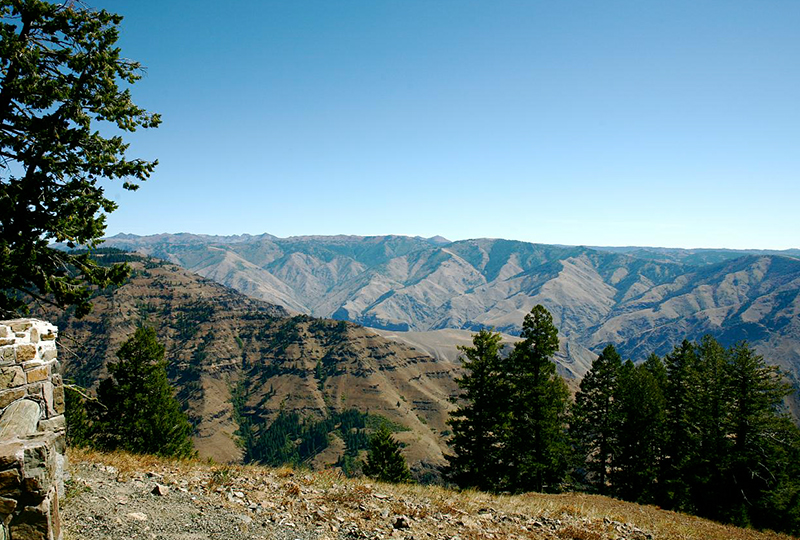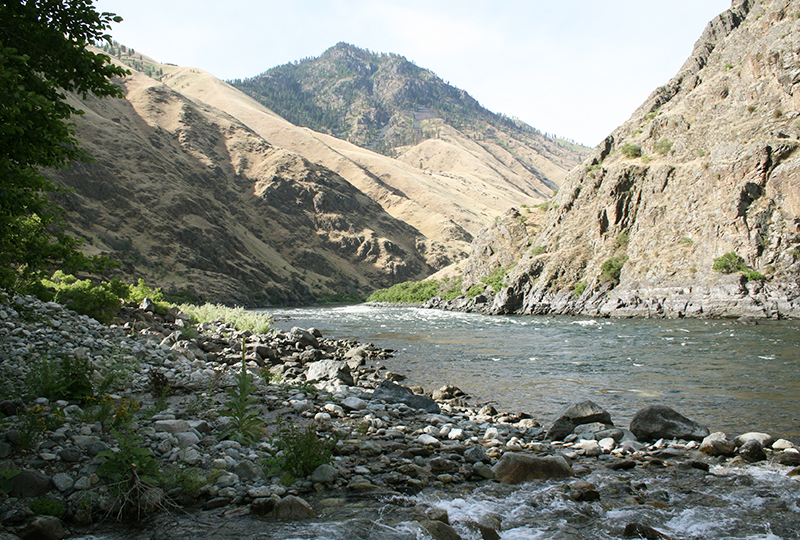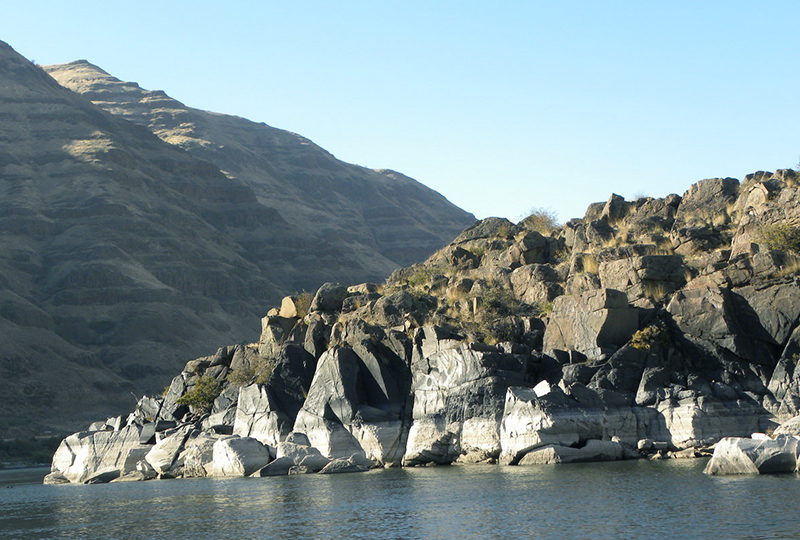
Introduction to the Geology of Hells Canyon
Geological interpretations of a particular region change with time because of additional geologic mapping and the development of new techniques. Furthermore, the geologic time scale changes as rock units are dated more accurately and precisely. For example, when I started college in 1962 the age of the earth was estimated at about two billion years. Now we know the age is more like 4.5 billion years old. The boundaries between units in the time scale shift as new data become available. Those shifts are expected to continue.
The geology of Hells Canyon, containing rocks with ages between about 265 million years ago (Ma) and 115 Ma, is related to the development of a complex intra-oceanic island arc, like the Tonga, Aleutian, and Marianna island arcs, which collided with the ancestral North American continent in the 130 to 125 Ma time interval. Intra-oceanic island arcs form where two oceanic plates collide and one dives under (is subducted under) the other plate.
 |
 |
 |
Blue Mountains Province
The geology of Hells Canyon cannot be separated from that of the Blue Mountains Province, of which Hells Canyon is a part. The older rocks (i.e., older than 115 Ma) in the Blue Mountains Province belong to various rock units within the Blue Mountains Island Arc (BMIA). The Blue Mountains Island Arc is separated into terranes, which represent fault-bounded rock bodies that differ from adjacent rock bodies because they have disparate geologic histories. The terranes are Baker, Wallowa, Olds Ferry, and Izee. Hells Canyon lies within the Wallowa terrane. In general, the Wallowa and Olds Ferry terranes represent magmatic axes (where volcanoes and plutons form) of an island arc, the Baker terrane represents the fore-arc area, and the Izee terrane is in part an overlap sedimentary assemblage that overlaps the other three terranes.
17 Million Years Ago . . .
About 17 to 14 Ma, most of the Blue Mountains Province was covered by basalt lava flows of the Columbia River Basalt Group. Subsequently, tectonic uplift of the region, faulting, and erosion have modified the rocks. Pleistocene glaciation carved some of the peaks high valleys in the Wallowa and Seven Devils Mountains.
A better understanding of Hells Canyon geology and the Blue Mountains island arc can be accomplished by reading some of the references included in this web site. If you have specific questions about the geology of Hells Canyon, please feel free to contact the geologist.